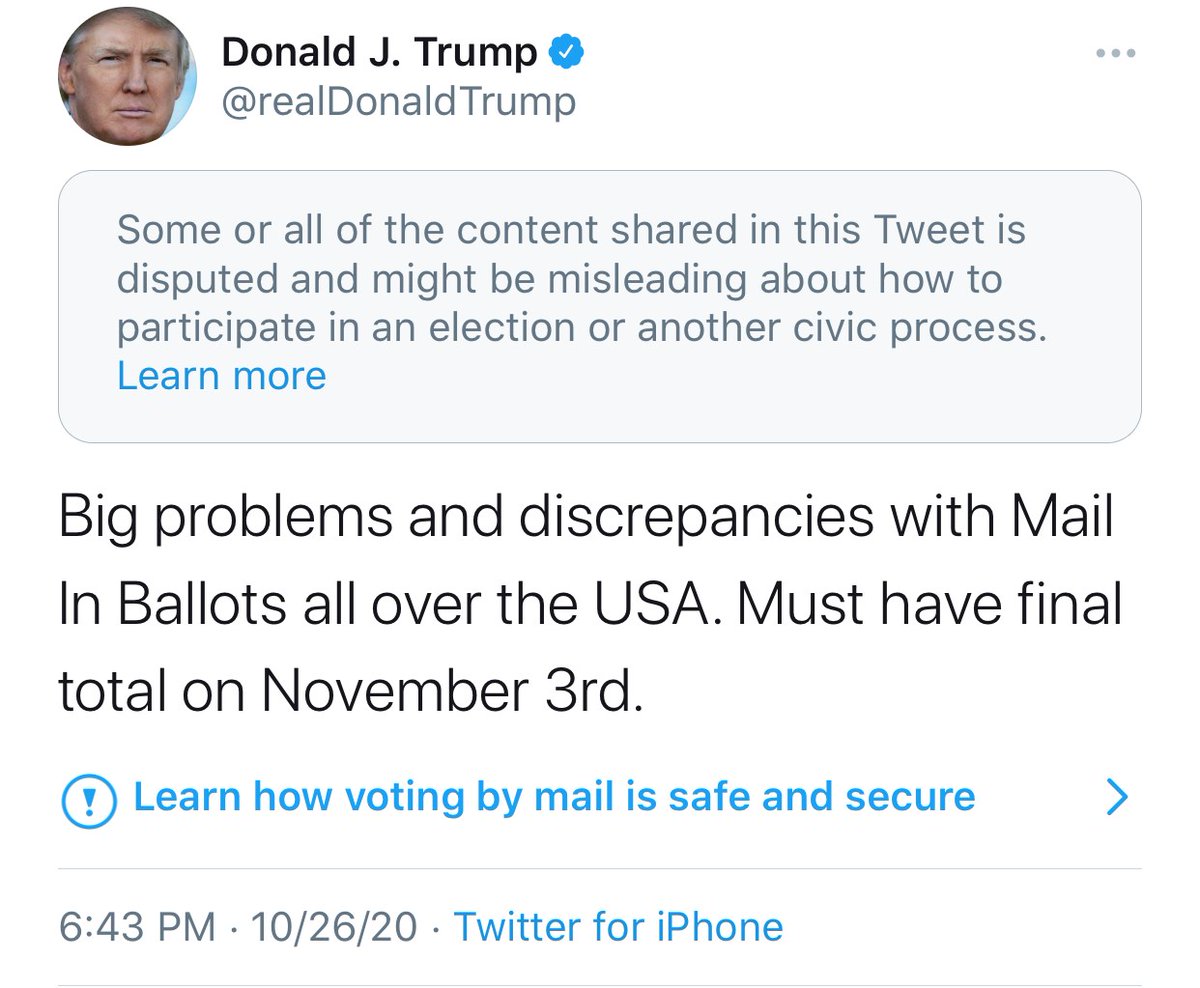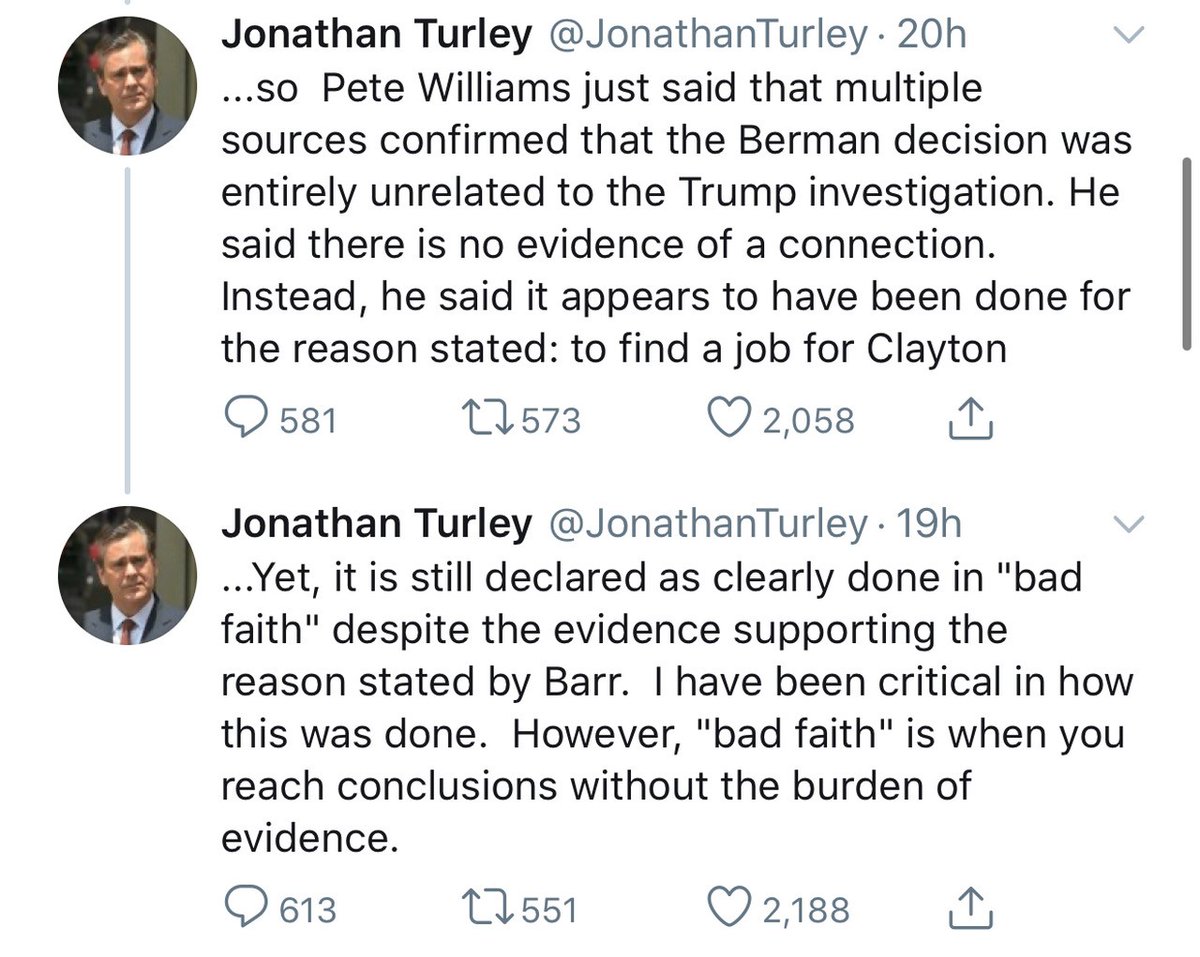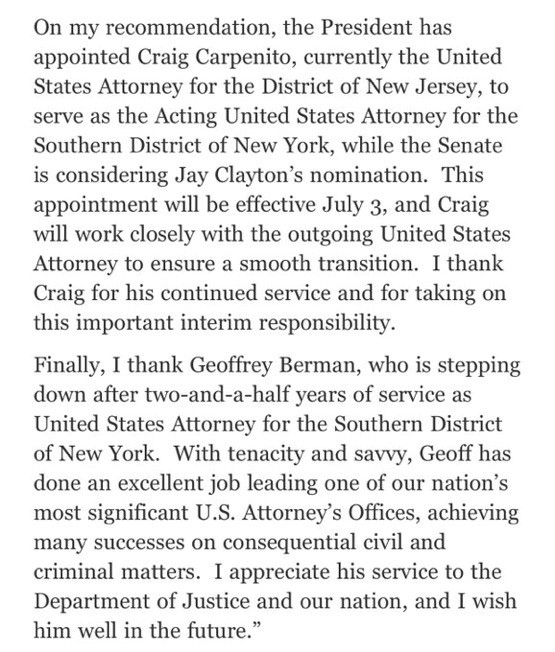
1. An attempt to clear up confusing public discourse about counting ballots, in five tweets.
When Trump talks about no "counting" after Election Day, he could mean one of two things:
A) No tabulating *at all* after 11/3; or
B) No counting of ballots *received* after 11/3.
When Trump talks about no "counting" after Election Day, he could mean one of two things:
A) No tabulating *at all* after 11/3; or
B) No counting of ballots *received* after 11/3.
2. Claim A is just insane. As I've explained in detail in another thread, *no* state finishes counting all of its ballots *on* Election Day, and every state but one waits at least a week before fully certifying their results. Federal law is clear on this:
https://twitter.com/steve_vladeck/status/1321033036104896513?s=20
3. And so, when Trump says that courts are siding with him about no counting after Election Day, he's just flat-out wrong.
Claim B is trickier because rules for when absentee/mail-in ballots must be *received* necessarily vary by state, as there's no uniform federal standard.
Claim B is trickier because rules for when absentee/mail-in ballots must be *received* necessarily vary by state, as there's no uniform federal standard.
4. Much of the litigation you're reading about involves courts deciding whether (and to what extent) different states' laws allow for late-arriving mail-in ballots to be counted. There almost certainly *isn't* one uniform answer, hence all of these (outwardly disparate) rulings.
5. But however *those* cases are resolved, what's clear is that the counting of votes received *by* 11/3 can and will go past that date; the result won't be official until enough states certify that one candidate has 270 EVs; and there's *nothing* nefarious about *any* of that.
• • •
Missing some Tweet in this thread? You can try to
force a refresh












